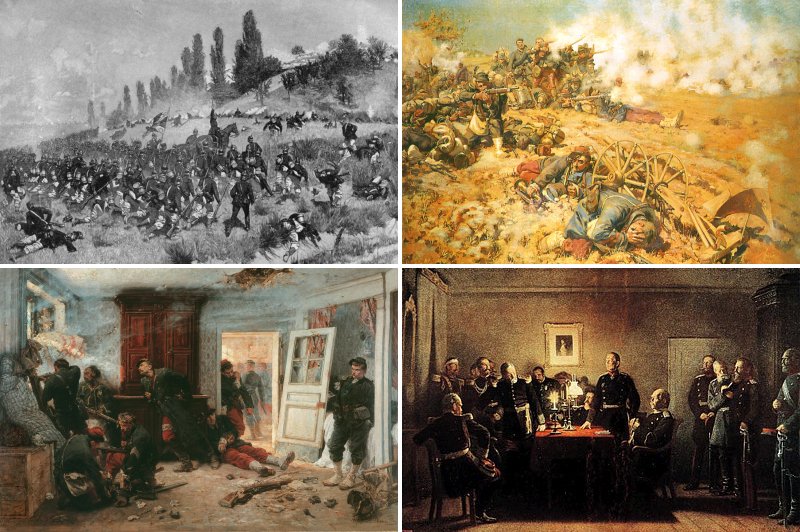I'm just going to grab a few examples, and look at the number of units dedicated to the frontage covered.
At Gravelotte-St Privat, according to Waro, French III Corps covered a frontage of about 4km. Based on the OBs posetd earlier, that is roughly 16 regiments of infantry, 16 batteries of various calibers, and 6 regiments of cavalry. That is, crudely. 8 men a meter.
At the other extreme, at Wissembourg (excluding the detachment in the town, and using the OB from 1870 and the map from Waro) we have 5000 men defending a front of about 2km. Crudely again, 2.5 men per meter.
Of course, this war is far from the linear warfare of the 18th century. On the breach-loading battlefield, at the scale of armies, the number of men that can stand shoulder to shoulder two ranks deep in a certain width really does not help us understand the frontage our stand should have. It is my belief that we have to:
- look at the formations that existed withing the tactical doctrine of the opposing armies.
- determine (guess?) the trade-offs between control, firepower, morale and close combat capability implied by that formation
- establish a pattern of the placement of the stands of a formation (still in my mind a division) so that the tactical formation is uniquely indicated, and the pattern is both evocative of how the formation would appear on the ground and visually attractive when looking at the table.
So how do we want the figures to look on the table? Well, we want them to look like this, of course:

If memory serves, (it would take me a while to find a source to check it) a contemporary British regiment would in theory deploy roughly 1/4 of its strength in an extended fireline, 1/4 in close support and 1/2 in reserve, preferably in dead ground and in column if safe to do so.
ReplyDeleteThe firing line could be thickened if cover was available but internal reserves are stressed.
The whole being some hundreds of yards deep. A 3cm sq base might be barely deep enough for waves of troops.
The examples you quote seem to imply reserves but to what degree they were internal to regiments or indicate regiments, brigades or divisions being held back would be most useful at this point.